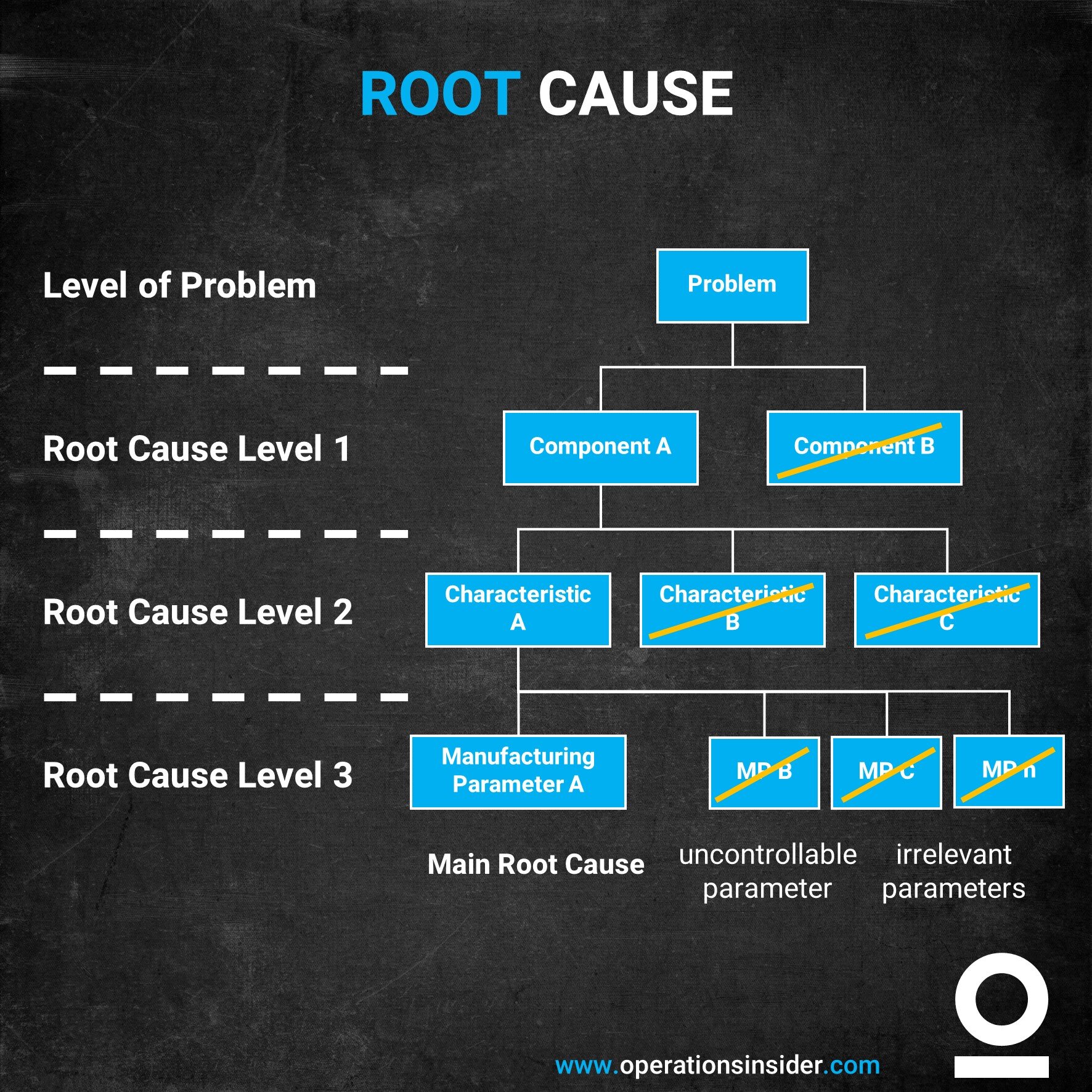Root Cause
The Root Cause Analysis brings you to the ultimate reason for an event or condition
Methods used in the root cause analysis help you to identify the actual causes of defects or problems in your goods or processes. The whole idea behind a root cause analysis is to understand and get rid of the source of the problems and not to fight the symptoms. Thinking about quality management the Root Cause Analysis is a big part of it and has an impact on Six Sigma and 8D processes.
The root cause analysis is in demand when problems can no longer be solved with pure empirical knowledge (e.g. known products are used in new operating conditions and cause problems there).
The basic idea of all Root Cause Analysis methods is first of all to describe the problem (symptom) as precisely as possible, to limit the potential sources of the problem and then to systematically follow the error path. A distinction has to be made between purely theoretical analyses and experimental root cause analysis.
Known theoretical methods are the 5-Why question technique and the 6M method (Ishikawa). These methods, however, often suffer from the limitation to consider complex problems insufficiently. For example, it is impossible to identify combined root causes.
For complex problems, Vester's system analysis shows very good results in practice. Using the so-called intensity relationship matrix, expert knowledge is systematized and thus contributes to new approaches.
The area of root cause analysis also includes experimental designs that have the goal of eliminating a problem. A distinction must be made here between problems resulting from the production and assembly process and those resulting directly from the components or combinations of components. One of the well-known methods in this area is the component exchange methodology, which represents a methodically and statistically proven way of eliminating problems caused by components.
Apply Root Cause Analysis methods to your quality problem.
6M methodology (Ishikawa)
Vester` intensity relation matrix
Problem identification and identification through statistical product analysis in ongoing production through a practically established multi-stage problem-solving approach.
Root Cause Analysis

